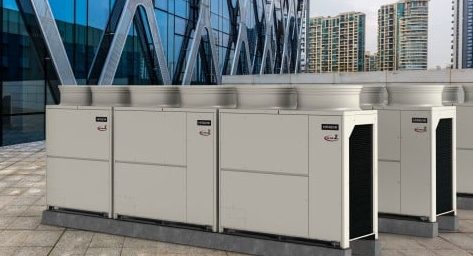A recent ASHRAE Journal article highlights both the benefits and need for careful installation of VRF (Variable Refrigerant Flow) systems. UEP now distributes one of the leading VRF product lines from Hitachi and this article offers some great lessons as we work to educate our customers.
We’ve shared just the topline takeaways below, but the full article by Kelley Cramm, P.E. in ASHRAE’s November 2022 issue covers a lot of specific details that are definitely worth a read. The author walked through case studies for two VRF retrofits in Midwest schools, one was a retrofit, the other new construction. The larger school required about 350 VRF fan coil units. Ventilation air for each was installed a bit differently, but both used dedicated outdoor air system units (DOAS) with energy recovery wheels direct-expansion (DX) cooling. Ventilation air was supplied directly to the spaces.
VRF systems allow individual temperature control for each space – which is ideal for both comfort and efficiency in school classrooms. But these case studies underscored the critical importance of installation details. The bottom line according to the author is that only factory trained and certified installers should be used on site. And that manufacturer’s installation shop drawings must be strictly followed. In the examples cited, there were many issues where actual pipe sizes and lengths varied from the shop drawings, which significantly impacted the total piping volume and therefore, the necessary refrigerant charge. The result was a number of compressors failing over time. Deviations on site must be reviewed by the manufacturer so proper adjustments to the refrigerant charge can be made.
The general contractor or construction manager needs to appreciate the importance of quality assurance throughout design and installation to make sure the manufacturer’s requirements are being followed.
Want to learn more? Contact UEP about our Hitachi VRF Systems and access the full ASHRAE Journal article here (membership access is required).


